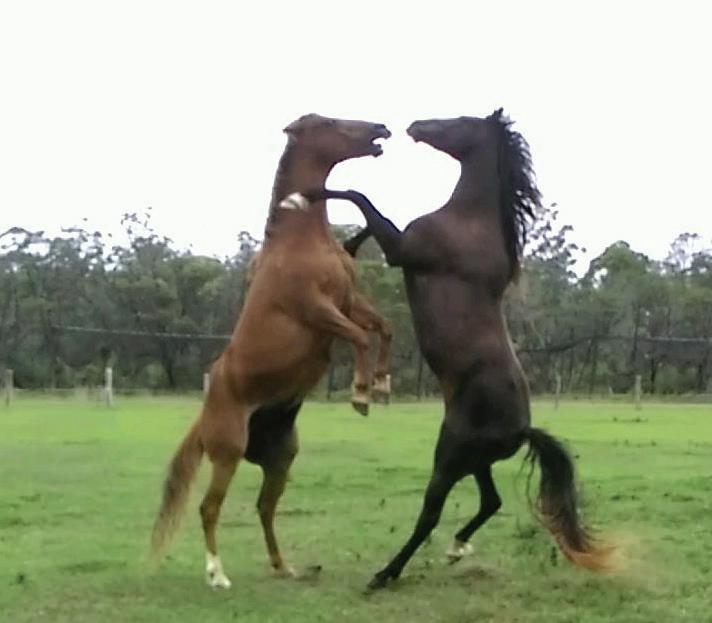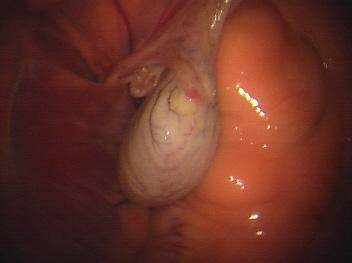
7 minute read
GELDINGS BEHAVING BADLY
by Dr Jennifer Stewart

Advertisement
Geldings who ‘claim’ mares; who behave badly when being separated from a mare; who ‘change’ when a mare is in season; who ‘guard’ or ‘herd’ mares; who mount mares; that show overly protective, stallion-like behaviour; who over-react to other geldings when mares are present; who are aggressive – even visciousness - towards other horses, and others who show hostility toward horses walking past their yard or stable can be found in nearly every establishment and group of horses.
Approximately 50% of geldings show some stallion-like behaviour – but there are also geldings who are not geldings! Cryptorchids (also known as a ‘rig’, ‘rib ridgling’, ‘proud-cut’ or ‘high-flanker’) are male horses that lack either visually or on palpation, one or both testicles. Cryptorchidism means “hidden testes” (crypt = hidden, orchid = testes) and is a developmental defect found in animals, humans and horses. Around 15% of two- to three-year-old colts are rigs, so it’s not uncommon.
There are several reasons why a mature horse with no detectable testicles behaves like a stallion: both testicles may be in the belly instead of the scrotum (called a retained or undescended testicle), one testicle
may have been removed and one still in the belly or they may have been castrated after a previous life as a breeding stallion.
The testicle(s), which begin life near the kidneys, may have failed to make the journey down into the scrotal sac during the final 3 months before birth. They can become ‘stuck’ at any point and if still inside the belly, they’re classified as ‘abdominal’ (75% are left-sided) whereas if they get as far as the canal that leads into the scrotum, ‘inguinal’ cryptorchids (60% of which are the right testicle). Inguinal retention is by far the more common and the testicle may be temporarily or permanently retained.
Pic 1 – An internal view where we can see the opening of the inguinal canal. Image courtesy of Dr Hadley Willsallen Specialist Surgeon

Temporary retention occurs mainly in ponies and is usually one-sided (in 75% of ponies it’s the right side) and in most cases the retained testicle eventually makes its way into the scrotum by 3 years of age. Permanent inguinal retention occurs in all types of horses, usually involves only one testicle but right and left sides are equally affected. Abdominal retention is when the testicle is still in the abdominal cavity. When retention is complete, both the testicle and the epididymus (the long, coiled tube that stores sperm and transports it from the testes) are retained in the abdomen. Being fairly mobile, they can become mixed up with coils of intestine. In incomplete abdominal retention, part of the epididymus is located in the inguinal canal but the testicle itself remains in the abdomen.
Cryptorchids occur in all breeds but are more common in Quarter Horses, Saddlebreds, Percherons, and ponies. Although undescended, the
Pic 2 – The undescended testicle located during cryptorchid castration procedure Image courtesy of Dr Hadley Willsallen Specialist Surgeon

retained testicle still produces male hormones leading to characteristic stallion behaviour. Horses with one descended testicle are usually fertile, while horses with both testicles undescended are generally sterile. Because it is heritable, gelding is recommended to help prevent continuation of the congenital defect and for safety/behavioural reasons. But in biology rarely are things straight-forward and just because a stallion is a cryptorchid doesn’t mean that his male offspring will necessarily be cryptorchids, nor does the absence of cryptorchidism in the sire guarantee that all of his male offspring will be free of the condition! However, retained testes should be removed, not only because this helps eliminate objectionable behaviour, but also because retained testes are more prone to spermatic cord torsion and have a higher incidence of developing tumours.
Diagnosis of a cryptorchid is often not straight-forward and is a job for your veterinarian. It often requires sedation. Most horses resent being groped and quickly retract their testicles upwards especially with fear, cold weather or cold hands. If both testicles are retained in the abdomen it can be difficult to tell whether the horse is a cryptorchid or a gelding, especially if the history is unknown. In these cases, your vet may undertake external and internal palpation, ultrasound examination and/or blood hormone tests. Lack of one or both testicles can sometimes only be identified at the time of castration. Palpation of the scrotum of a newborn foal can be confusing because at this age the epididymus can be larger than the testicle itself. If just the epididymus is positioned in the scrotum, it can easily be mistaken for a testicle. Once diagnosed, treatment options are considered.
As a rule-of-thumb, both testicles must be descended for a colt to be castrated. I’ve attended several cryptorchids where the descended testicle was removed but with the passage of time, no-one could remember which side it was! So if only one testicle is present you can either give the colt more time in the hope that the missing testicle will eventually descend, although this does not always occur (if the testicle has not descended by one year of age, then it becomes increasingly unlikely that it will ever ‘drop’); or castration of both testicles! Unilateral castration
Castration of a cryptorchid is more complicated than normal because the testicles are usually small, often misshapen with an abnormal appearance and so anaesthesia is often longer. Also the surgery may be more invasive, extensive and complicated as there is no way of knowing exactly where the retained testicle is positioned until the horse is fully relaxed and lying on its back. A history of previous attempts at castration decreases the ability to accurately predict the location of the retained testicle.
Pic 3 – Clamping the cord during castration Image courtesy Dr Hadley Willsallen Specialist Surgeon

This transabdominal ultrasound shows the intra-abdominal testicle. Photo courtesy Dr Hadley Willsallen Specialist Surgeon

Sometimes it is necessary to determine whether a horse with no palpable testis, that displays a stallion-like behaviour, is a bilateral cryptorchid, a cryptorchid that has its descended testis removed, or a gelding with behaviour problems. In this situation, hormonal assays may be useful. Unfortunately, none of the hormonal tests are 100% accurate and, often, surgical exploration of the abdomen is necessary.
If an apparent gelding is showing rig-like behaviour, blood hormone tests can be performed to determine if hormone-producing testicular tissue is still present. Although hormone levels fall almost immediately after testicle removal (unless they are coming from the adrenal or pituitary gland – which can produce false positive blood tests), learned stallion behaviours often take a period of time and training to change and can persist indefinitely depending on the horse.
Aggressive behaviour that can’t be surgically removed can also be a problem! A false rig is an aggressive gelding that displays male dominancetype behaviour, despite having both testicles removed. The stallion-like behaviour displayed by false rigs is not driven by testosterone, and can only be addressed with correct management. Horses can become aggressive for a number of reasons, including survival, hormonal influences, frustration, fear and pain.
While aggression is a normal part of horse behaviour, by nature, horses are not an aggressive species, so identifying the cause of aggression is essential. Possible causes include fear, frustration, pain, dominance, protective, learned and redirected aggressions. Genetic factors, brain dysfunction and self-mutilation are more rare. If you are struggling with an aggressive horse talk to your veterinary surgeon, who can help identify and treat physical and medical issues that might be contributing to the aggression. Once these have been ruled out or treated, changing a horse’s attitude and behaviour requires patience, steady commitment and training. As always, seek the advice of your veterinarian before proceeding with any diagnosis, treatment, or therapy.
ABOUT THE AUTHOR –Dr Jennifer Stewart (BSc, BVSc, PhD, MRCVS, Dip BEP AAIM) is an equine veterinarian with over thirty five years of experience. She is also a consultant nutritionist and has formulated feeds, custom mixes and supplements for leading international horse feed manufacturers in Australia, India, Ireland, Japan, New Zealand, Philippines, South Africa, Thailand, Turkey and the UAE. Dr Stewart is passionate about equine nutrition and it’s role in the management, treatment and prevention of many equine diseases and she is committed to bringing ‘science to the feed bin’. www.jenquine.com




